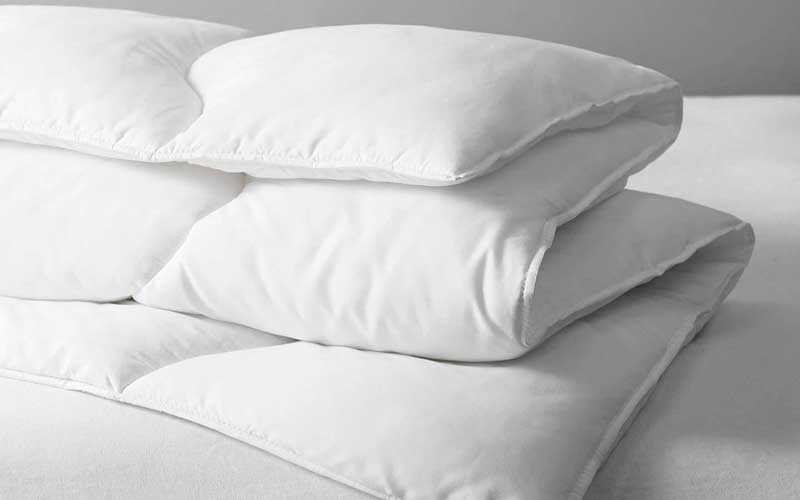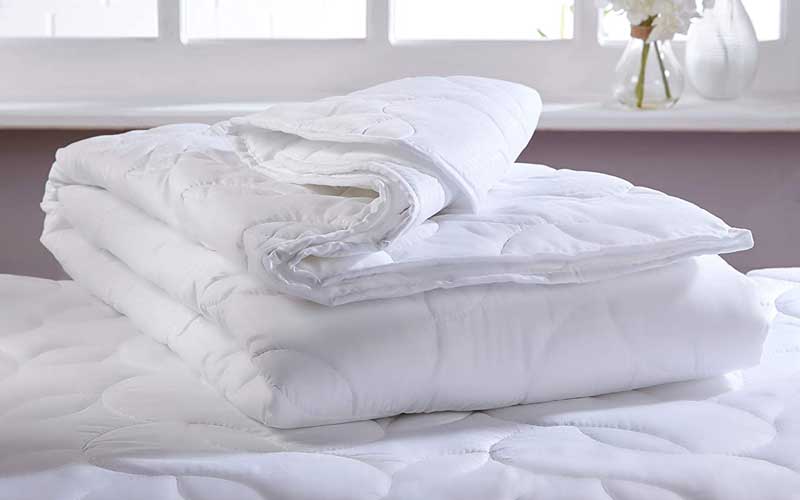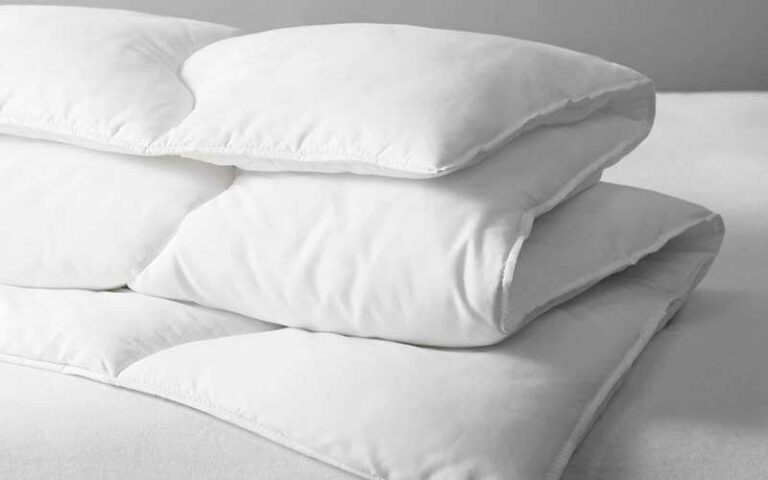Even the comfiest mattress wouldn’t be complete without a nice duvet to snuggle up under. However, not all comforters are made alike, and the best weight and thickness for every person will depend on the season, their bedroom environment, and their personal preferences. In this guide, we will explain how to choose tog, explain how it works and how it has an impact on your warmth and comfort so you can make an informed decision when you purchase one.
What does tog rating mean?

You may already know that quilts with a higher rating tend to be thicker and that duvets are sold with a tog rating on the label. But what does the word tog actually mean?
A tog is a measurement of how well a duvet insulates. The higher the tog rating, the warmer you will be, with 15 being the warmest and 1 being very cool and lightweight. Usually, the lightest duvet you can find on the market is 4.5 tog, while most thicker duvets are typically around 10 to 13.5 tog.
The effectiveness of the insulation will be dependent on the type of filling used, so it is worth remembering that a thicker duvet isn’t necessarily warmer. Understand that synthetic materials can be heavier but still have the same level of insulation as natural fibres. The tog rating refers to a duvet’s effectiveness at trapping heat rather than its weight or thickness.
The temperature of your bedroom and the season you’re using your quilt in will affect the right tog rating you receive.
How to choose a tog rating?
Generally speaking, which duvet is right for you will depend on two key factors and they are the temperature in your bedroom, and your personal preferences. It is best to invest in two different duvets, one for summer and one for winter, as the temperature of your home will vary according to the season.
When the temperature drops, this will keep you warm and snug, while you will feel light and comfortable in summer’s warm nights. If you want to learn more about the suitable togs for winter and summer, we’ll discuss it later in this duvet tog guide.
What’s the best tog for summer?

A 4.5 tog summer duvet is ideal for the warmer months and will keep you comfortably insulated without overheating. There is nothing worse than not being able to sleep on a hot summer night, which is why you should have a lightweight duvet with which you can stay cool and relaxed.
However, some individuals prefer the feel of a heavier duvet, even in warm weather, so if you are one of them, opting for a 7.5 tog style might be a more suitable option for you. In addition, comforters made with synthetic fibres are better during this time of year, as they tend to be more breathable.
What’s the best tog for winter?
Depending on how low the temperature drops in your bedroom, a 13.5 tog winter duvet will be perfect for the cold months. You will need to swap your lightweight summer duvet for one with a higher tog rating that provides extra insulation during the winter.
Ideally, you should try to keep your bedroom between 18 and 21 degrees Celsius overnight but, if your home doesn’t have central heating, and it gets colder, you could even go all the way up to 15 tog product.
What’s the best duvet tog rating for children?

When it comes to duvets, children and toddlers have different needs. Their bodies can’t regulate heat in the same way as adults, so if their bedding is too thick, they can easily overheated. Therefore, your child will need a thinner duvet with a lower tog rating even during the winter months.
The best rating for a child over the age of three is around 4.5 tog if the temperature in their bedroom stays between 18 and 21 degrees. However, if their room gets a little colder during the winter, then you might want to get them a comforter that’s up to 9 togs.
It is important to remember that children will feel warmer under heavier bedding than an adult would, so giving them a lightweight duvet is a good idea. Also, if your child’s bedroom temperature falls below 18 degrees, you should give them a blanket that they can add to their bedding if they wake up feeling chilly.
Your kid will have their first duvet cover by the time they are around one year old. If you’re worried about them getting too cold, keep an eye on the temperature of their bedroom and add blankets if needed. When they reach the age of three, you can consider increasing the number of togs.
Do babies need a duvet?
Babies under 12 months old should not have any kind of comforters, as it puts them at risk of being suffocated. It is much safer and more comfortable for infants to have lightweight baby blankets and sleeping bags since they can easily get overheated. One way to tell if your child is comfortable is to feel their tummy with the back of your hand and see if they are hot or in deep slumber.
Bottom line
Whether you prefer a natural or synthetic duvet, you should consider all of the options depending on the season you need them for. You want to find an option that will keep you cool in the summer and warm during the winter. We spend a third of our lives sleeping, which is why we have to pick items that will bring us the support and comfort we need.
That’s where tog ratings come in and help you understand what a duvet can bring. Remember that a heavier option isn’t always the warmest and vice versa.
We hope we were able to answer the how and why, and now it’s our turn to hear from you if any questions regarding the subject were left unanswered. If you want to share some information, we would gladly hear about it in the comments below.

